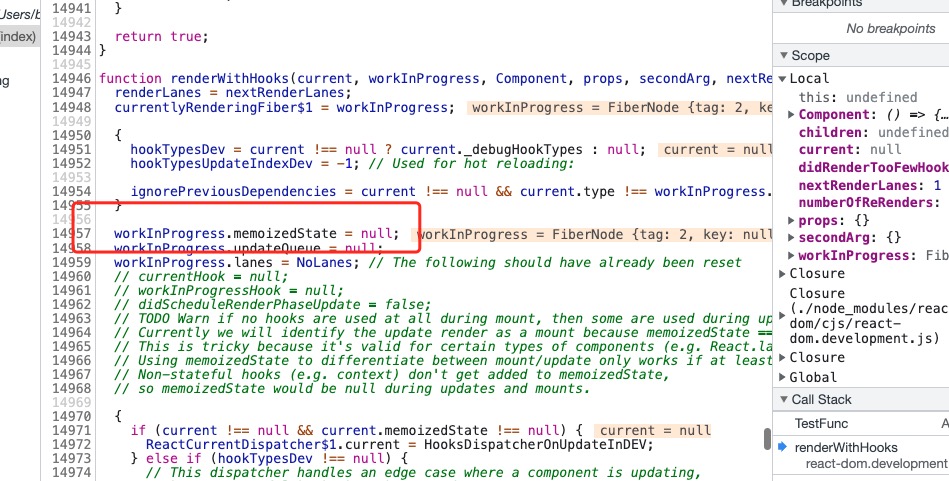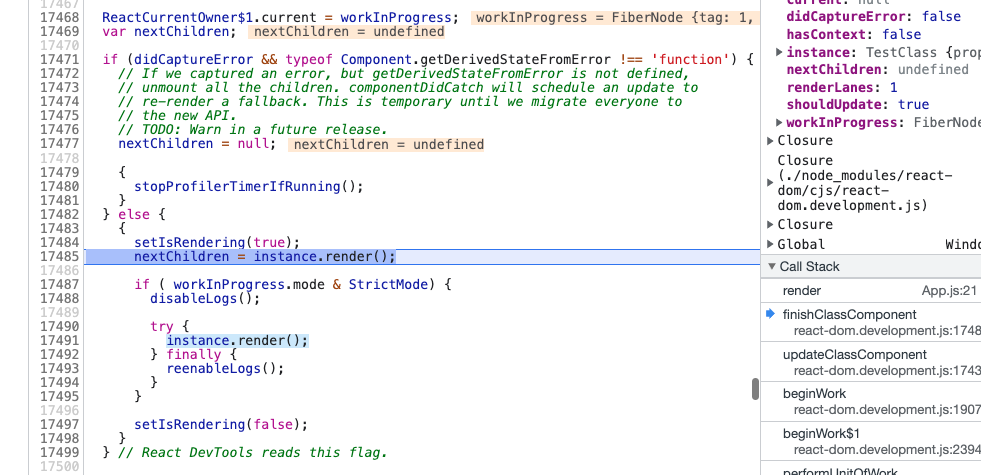This is an interesting observation so I've tagged it for discussion. (Not sure it's something we'll change though.)
Your investigation above is correct, but missing one detail– in strict mode, React instantiates class components twice (to tease out side effects in the constructor): https://github.com/facebook/react/blob/bcd24a6706cd802e49e9c0a509a42893ddceca7b/packages/react-reconciler/src/ReactFiberClassComponent.new.js#L656-L670
The primary difference is that it throws one of the two instances away and calls render twice on the single remaining instance– so the class instance ref isn't reset between those two renders.
This is kind of an artifact of the way the code is structured. (It would have been a much more pervasive change to do the larger instantiate-and-render loop twice.)
React version:
17.0.2
Steps To Reproduce
Reason: I looked at the source code and found that for the function component, although renderWithHooks was called twice before and after and the same workInProgress was used, but every time in the "renderWithHooks" method, the value of "workInProgress.memoizedState" is set to null, and in the useRef function of the mounting phase, the "workInProgress.memoizedState" property on "alternate" will not be reused, therefore, in the mounting phase in strict mode, during the second rendering, the state saved by ref during the first rendering cannot be obtained in the function component.
But in the scenario of the class component, the same "instance" is used when the render method is called twice before and after, so the "this" in the render method two times before and after all points to the same one "instance".
Expected: I think that since the role of strict mode is to make multiple calls so that developers can find that using side effects in some life cycles may cause some problems, should the phenomenon of the class component be consistent with the phenomenon of the function component?
Thanks~:pray::pray::pray: